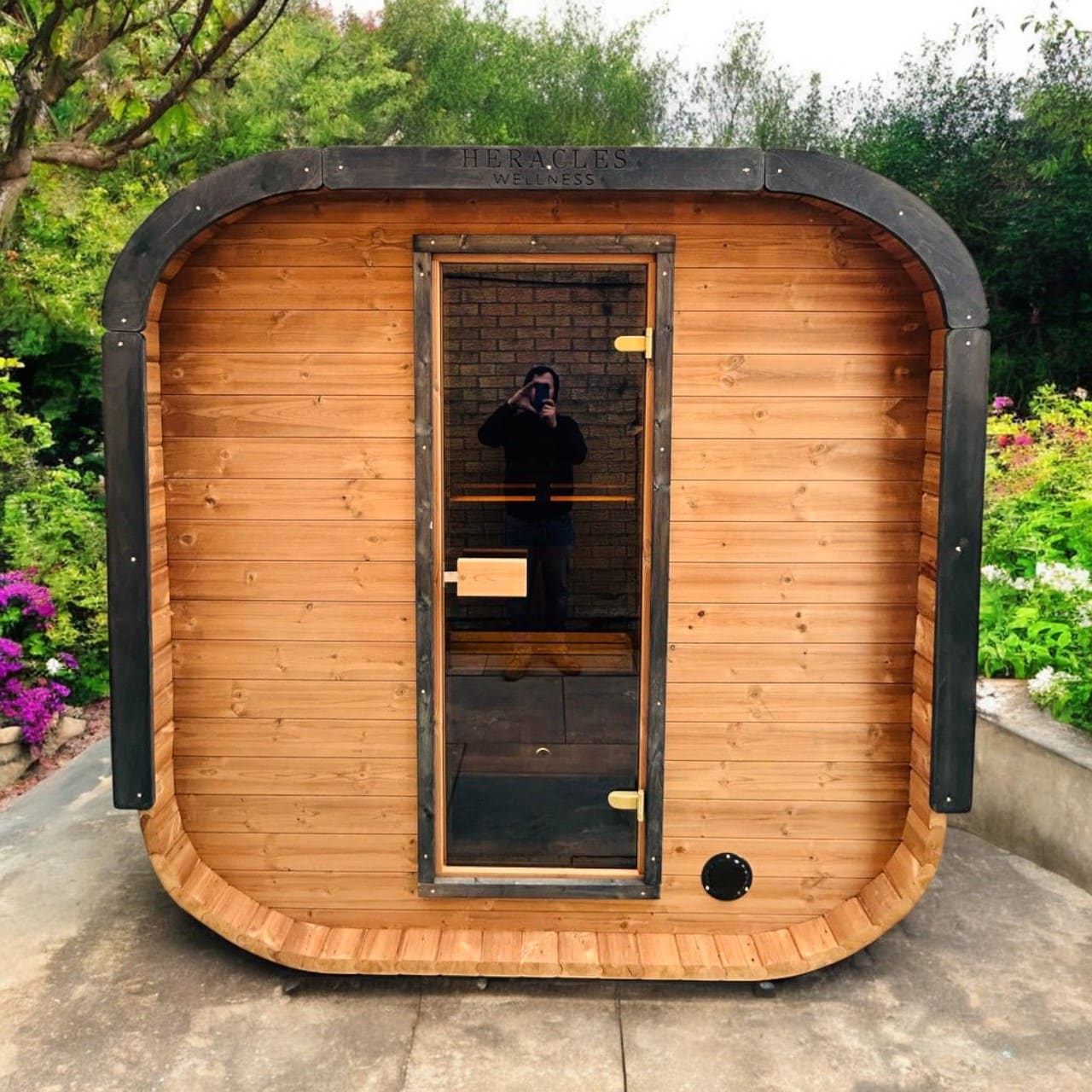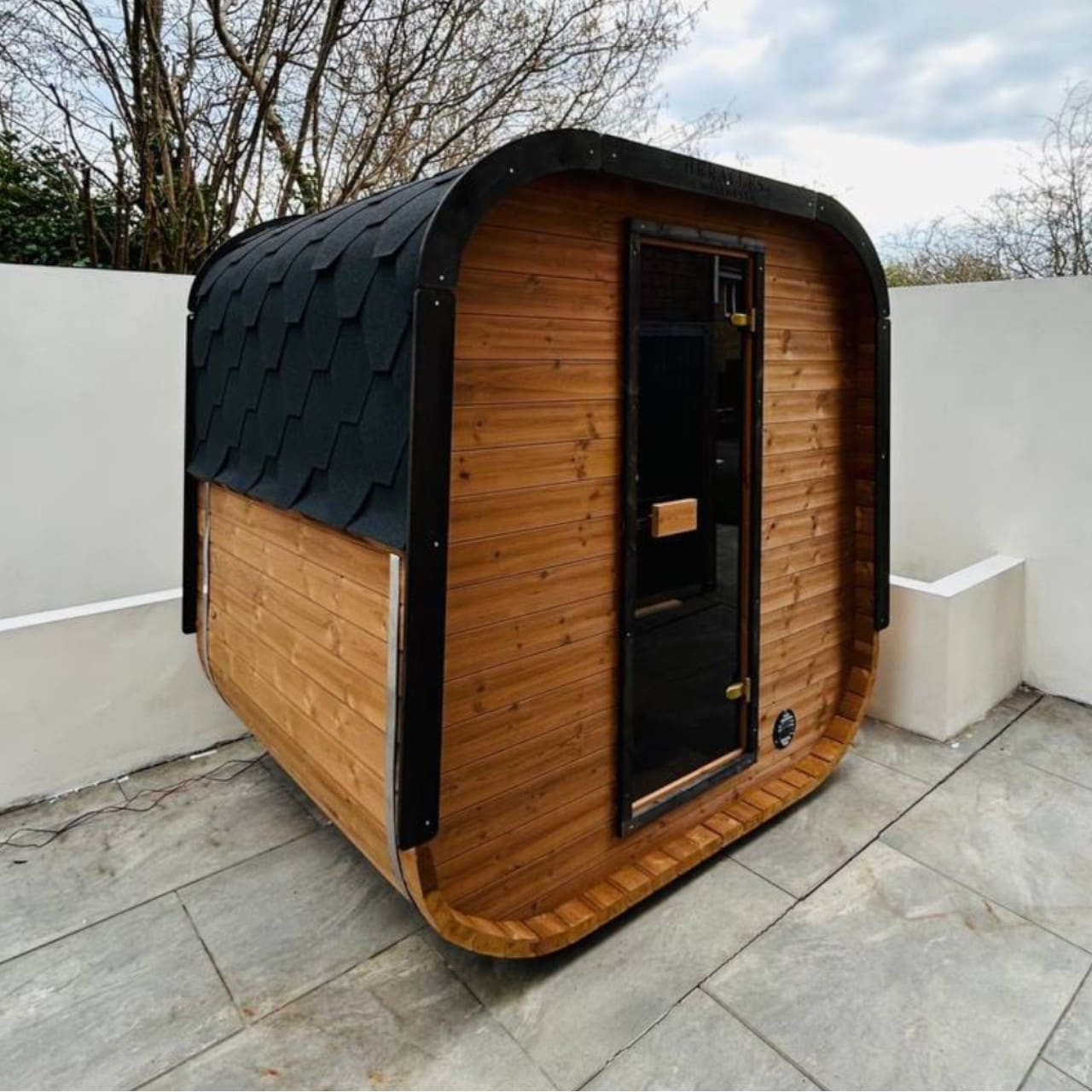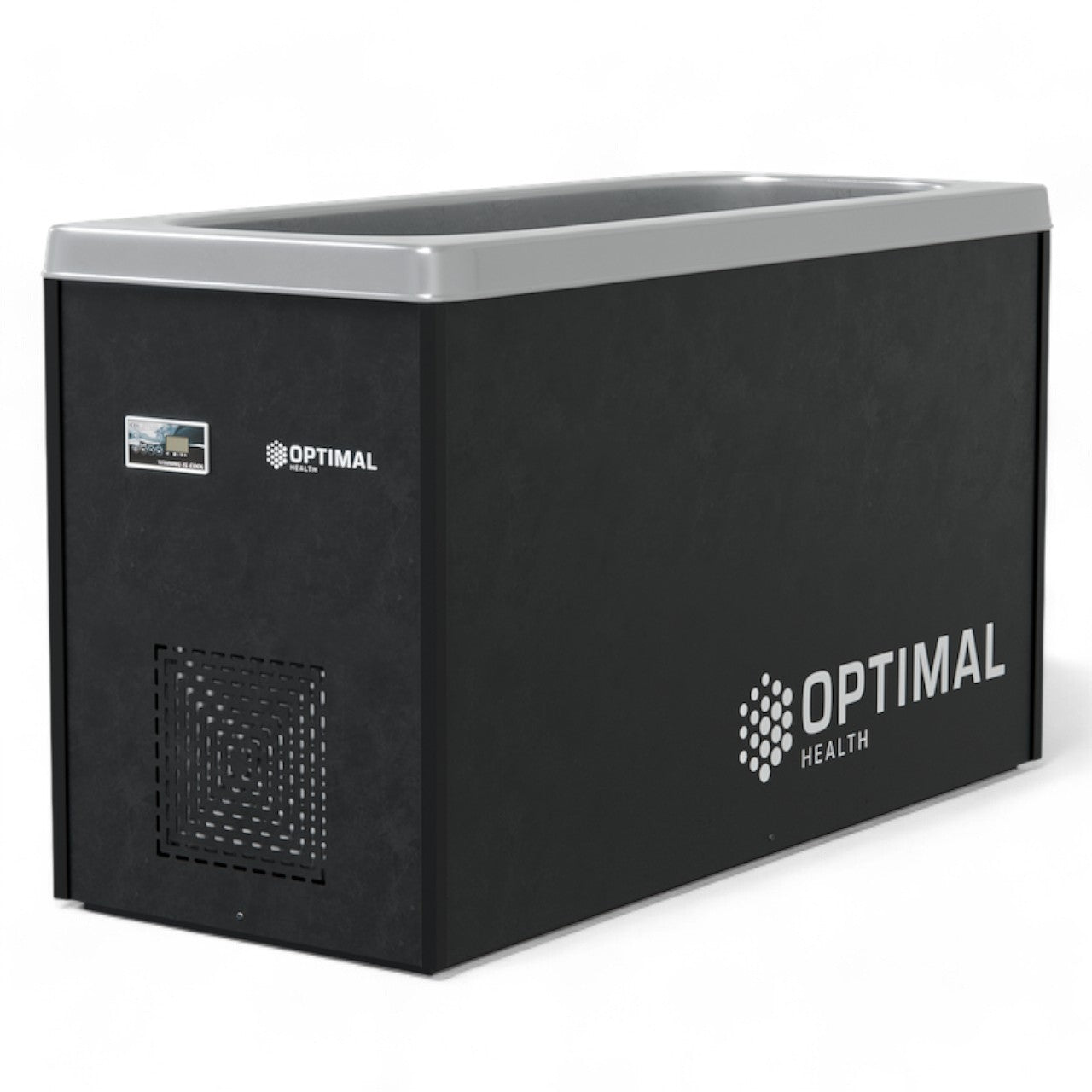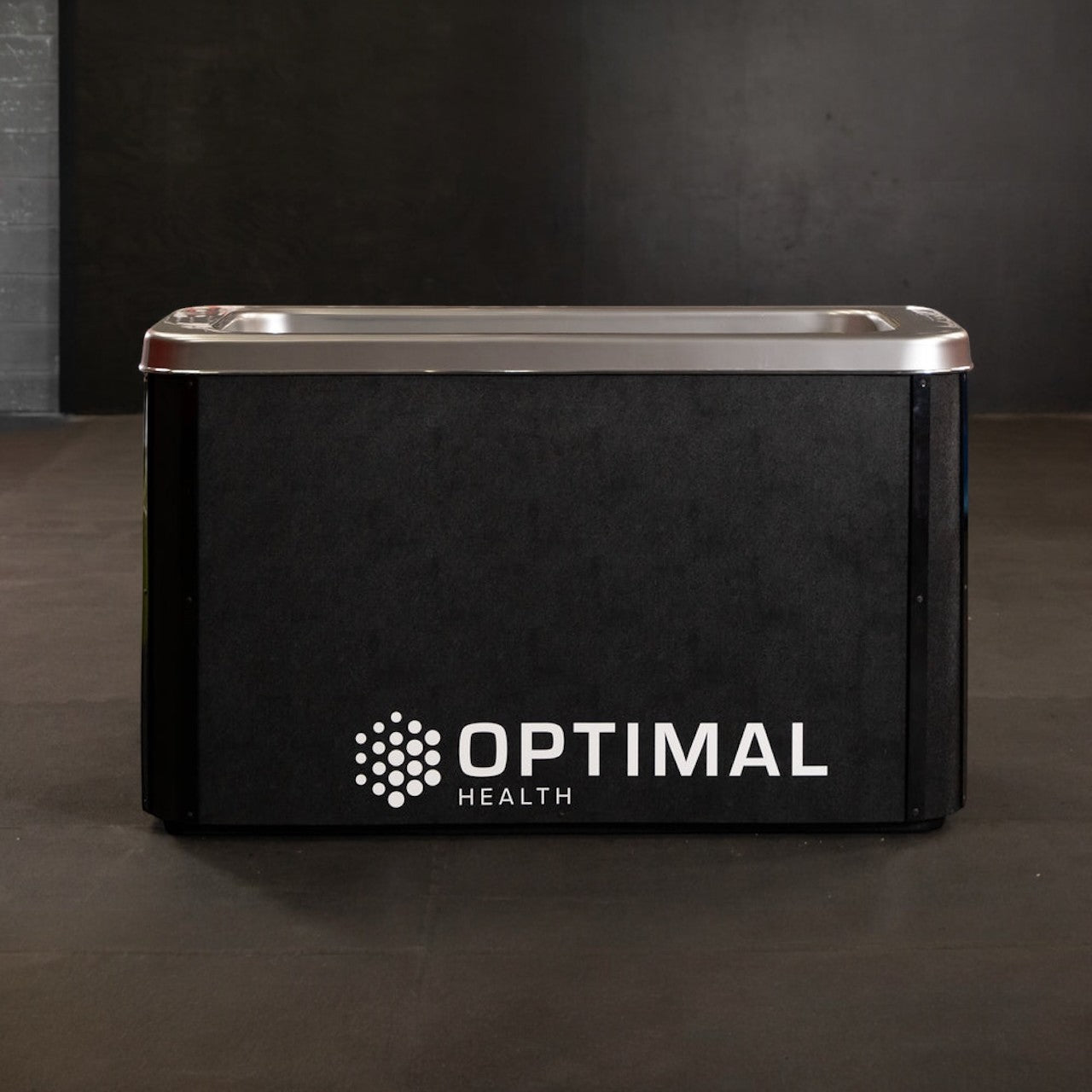Hitting the sauna after a workout has become a popular way to enhance fitness routines, and for good reason. The science-backed benefits go beyond just anecdotes - from improved muscle recovery to better cardiovascular health, the sauna offers several advantages that can elevate your post-workout experience.
When you step into a sauna, your body is exposed to high temperatures that cause you to sweat heavily as it attempts to cool down. This process dilates blood vessels, increasing blood flow and delivering nutrients and oxygen to tired muscles. It's an effective way to support recovery after a tough gym session.
But the benefits don't stop there. Saunas can also promote detoxification, help with relaxation and stress relief, support cardio health, and even aid in weight loss. So if you're looking to take your fitness routine to the next level, consider adding a sauna session to your post-workout cool-down.
What Are the Different Types of Saunas?
There are several types of saunas, each offering a unique heating method and experience. Let's explore the two main categories: traditional saunas and infrared saunas.
Traditional Saunas

Traditional saunas, also known as Finnish saunas, are the most common type. They typically use wood-burning stoves or electric heaters to heat the air and the sauna rocks, creating a warm and relaxing environment. Here are the key characteristics of traditional saunas:
- High temperatures: Traditional saunas are usually heated between 150°F and 195°F (65°C to 90°C).
- Low humidity: While the air is hot, the humidity levels are relatively low, usually between 10% and 20%.
- Steam generation: Users can pour water over the heated rocks to create a burst of steam, temporarily increasing the humidity.
We have a complete traditional sauna product range for you.
There are two main types of traditional saunas:
- Wood-burning saunas: These saunas use a wood-fired furnace to heat the rocks, creating a classic and authentic sauna experience.
- Electric-heated saunas: These saunas rely on an electric heater to heat the rocks and the air, offering a more convenient and easily adjustable temperature control.
Infrared Saunas

Infrared saunas are a more modern alternative to traditional saunas. Instead of heating the air, they use infrared light to directly heat the body. Here are the main features of infrared saunas:
- Lower temperatures: Infrared saunas operate at lower temperatures, typically between 120°F and 140°F (49°C to 60°C).
- Targeted heating: The infrared light penetrates the skin, directly warming the body and promoting sweating without the need for high air temperatures.
- Dry heat: Infrared saunas provide a dry heat experience, with very low humidity levels.
Check out our premium infrared saunas for home.
Infrared saunas offer several advantages:
- Accessibility: The lower temperatures make infrared saunas more accessible for people who may be sensitive to the high heat of traditional saunas.
- Efficiency: Since infrared light directly heats the body, users can begin sweating and experiencing the benefits at lower temperatures.
- Portability: Infrared saunas are often available in smaller, portable sizes, making them a convenient option for home use.
Whether you choose a traditional sauna or an infrared sauna, both offer a relaxing and beneficial experience after a workout. The heat helps promote muscle recovery, relaxation, and overall well-being.
You can read our thorough analysis on infrared sauna vs traditional sauna to learn everything about the differences.
Top Benefits of Using a Sauna After Your Workout

The heat and humidity of a sauna provide a range of health benefits that can enhance your post-workout recovery. Let's explore the top advantages of incorporating sauna sessions into your fitness routine.
Accelerated Muscle Recovery and Reduced Soreness
I've found that using a sauna after a workout can significantly speed up muscle recovery. The heat increases blood flow, delivering oxygen and nutrients to tired muscles, which helps repair micro-tears caused by exercise. This increased circulation also removes metabolic waste products like lactic acid, reducing muscle soreness and stiffness.
A small study published in the Journal of Human Kinetics found that participants who used a sauna after resistance training experienced less delayed onset muscle soreness (DOMS) compared to those who didn't. The relaxing effect of the heat on muscle fibers can provide pain relief and improve comfort levels following intense workouts.
Improved Cardiovascular Health and Circulation
Regular sauna use can boost cardiovascular health by improving heart function and blood vessel flexibility. A 2018 review published in the Mayo Clinic Proceedings found that frequent sauna bathing was associated with a reduced risk of cardiovascular disease and high blood pressure.
The heat exposure causes blood vessels to dilate, which lowers blood pressure and enhances circulation throughout the body. This improved circulation not only aids in muscle recovery but also supports overall cardiovascular health.
Enhanced Relaxation and Stress Relief
I find that the warm, quiet environment of a sauna is perfect for unwinding after a workout. The heat promotes relaxation by releasing endorphins, the body's natural feel-good chemicals. This can help reduce stress, anxiety, and tension, leaving you feeling refreshed and rejuvenated.
A 2019 study published in Complementary Therapies in Medicine found that sauna use can induce relaxation effects similar to those experienced during moderate-intensity exercise. Taking time to relax in a sauna post-workout can help you de-stress and promote a sense of well-being.
Increased Weight Loss and Boosted Metabolism
While saunas shouldn't replace regular exercise for weight loss, they can support your weight management efforts. The intense heat raises your core body temperature, causing you to sweat and burn calories as your body works to cool itself down.
A single sauna session can burn up to 300 calories, depending on the duration and temperature. Additionally, the heat exposure may increase your metabolic rate, helping you continue burning calories even after you leave the sauna. Read all about whether sauna is good for weight loss in our detailed blog.
Detoxification and Clearer Skin
Sweating in a sauna can help eliminate toxins from your body, contributing to overall detoxification. The heat opens up pores, allowing sweat to flush out impurities and dead skin cells. This can lead to clearer, healthier-looking skin.
I've noticed that my skin feels softer and looks more radiant after regular sauna sessions. The improved circulation also delivers nutrients and oxygen to the skin, promoting a healthy glow.
Tips for Maximizing the Benefits of Post-Workout Sauna Sessions
To get the most out of your post-workout sauna experience, it's essential to follow some key guidelines. Here are my top tips for optimizing your sauna sessions and reaping the full range of benefits:
Optimal Timing and Duration
I recommend waiting at least 10-15 minutes after your workout before entering the sauna. This allows your heart rate to stabilize and gives your body a chance to cool down slightly. The ideal sauna session should last between 15-30 minutes, depending on your tolerance and comfort level. It's best to start with shorter sessions and gradually increase the duration as you become more accustomed to the heat. Also, if you are someone who likes the outdoor, we also have an outdoor wood burning sauna collection.
Staying Hydrated Before, During and After
Proper hydration is crucial when using a sauna, especially after a workout. I suggest drinking plenty of water before, during, and after your sauna session to replenish fluids lost through sweating. Aim to drink at least 16-32 ounces of water before entering the sauna and another 16-32 ounces afterward. You can also bring a water bottle into the sauna and take small sips throughout your session to maintain hydration levels.
Allowing Your Body to Cool Down Gradually
After leaving the sauna post-workout, it's important to let your body cool down gradually. I recommend taking a lukewarm or cool shower, using a cool towel, or simply resting in a cool, quiet area. Avoid jumping straight into cold water or an ice bath, as this can shock your system if you're not acclimated. A gentle cool-down followed by cold therapy, if desired, is a more relaxing and effective approach. This gradual cooling process helps regulate your body temperature and promotes a sense of well-being. Read our guide on how to avail benefits of using a sauna with an ice bath properly.
Precautions and Considerations

While saunas offer numerous benefits, it's crucial to be aware of potential risks and considerations before incorporating them into my post-workout routine. I'll discuss who should avoid using a sauna and the potential side effects to keep in mind.
Who Should Avoid Using a Sauna
Although saunas are generally safe for most people, there are certain individuals who should exercise caution or avoid sauna use altogether:
- Pregnant women: Excessive heat exposure can be harmful to the developing fetus, so pregnant women should consult their healthcare provider before using a sauna.
- People with cardiovascular issues: Those with uncontrolled high blood pressure, unstable angina, or recent heart attack should avoid saunas unless cleared by their doctor.
- Individuals with certain skin conditions: If I have open wounds, rashes, or infections, it's best to avoid saunas until my skin heals to prevent further irritation.
- Children and elderly: Young children and older adults may have difficulty regulating their body temperature and should use saunas cautiously, starting with shorter sessions and lower temperatures.
Potential Risks and Side Effects
Even if I don't fall into the above categories, it's important to be aware of the potential risks and side effects associated with sauna use:
- Dehydration: Sweating heavily in a sauna can lead to dehydration if I don't replenish fluids adequately. I'll make sure to drink plenty of water before, during, and after my sauna session.
- Overheating: Prolonged exposure to high temperatures can cause heat exhaustion or heat stroke. I'll listen to my body and exit the sauna if I feel dizzy, lightheaded, or nauseous.
- Decreased athletic performance: Using a sauna immediately before a workout may lead to decreased performance due to dehydration and increased core temperature. I'll save my sauna session for after my workout.
- Interference with certain medications: Some medications, such as diuretics or antihistamines, can impair the body's ability to regulate temperature. I'll consult my doctor if I'm unsure about using a sauna while taking medication.
By being mindful of these precautions and potential risks, I can safely enjoy the benefits of saunas after my workouts. If I have any underlying health conditions or concerns, it's always best to consult with a healthcare professional before incorporating sauna sessions into my routine. Sauna also helps with cold and we have outlined the benefits of sauna for cold in our guide.
Conclusion
I've discovered that incorporating sauna sessions into my post-workout routine has been a game-changer for my fitness journey. By taking advantage of the muscle recovery, detoxification, and stress-relieving benefits that saunas offer, I've noticed a significant improvement in how I feel after intense workouts. I'm able to bounce back faster and maintain a more consistent exercise regimen.
Whether you prefer traditional or infrared saunas, the key is to listen to your body and practice moderation. By following the tips I've outlined, such as staying hydrated and allowing for a gradual cool-down, you can safely enjoy the many benefits of post-workout sauna use. I encourage you to give it a try and see how it can enhance your overall fitness experience and well-being.
Q: What are the benefits of using a sauna after exercise?
A: The benefits of a sauna after workout include improved muscle recovery, reduced muscle tension, enhanced relaxation, and potential cardiovascular benefits. Spending time in the sauna can also help decrease soreness and improve overall well-being.
Q: How does spending time in a sauna after a workout affect heart health?
A: Using a sauna after exercise can promote heart health by improving circulation and lowering blood pressure. The heat from the sauna helps to dilate blood vessels, which can enhance blood flow and reduce cardiovascular strain.
Q: What different sauna types can I use after working out?
A: There are several sauna types you can use after a workout, including traditional Finnish saunas, dry saunas, and steam saunas. Each type offers unique benefits, with steam rooms providing moisture and warmth, while dry saunas offer a drier heat experience.
Q: How long should I sit in a sauna after working out?
A: It is generally recommended to spend 15 to 20 minutes in the sauna after a workout. However, it's important to listen to your body and consult a doctor before using a sauna, especially if you have any underlying health conditions.
Q: Can a sauna help with muscle tension after a tough workout?
A: Yes, a sauna helps alleviate muscle tension and soreness after a tough workout by promoting relaxation and increasing blood flow to the muscles, which can assist in recovery.
Q: Are there any health benefits of using a sauna regularly?
A: Yes, there are many health benefits associated with regular sauna use, including improved cardiovascular health, detoxification, enhanced skin health, and relief from stress. According to Harvard Health, these benefits can significantly contribute to overall well-being.
Q: What should I do before hitting the sauna after exercising?
A: Before hitting the sauna after exercising, it's advisable to hydrate well and allow your body to cool down slightly. This helps prevent overheating and ensures a more comfortable sauna experience.
Q: Is it safe for everyone to use a sauna after working out?
A: While many people can safely use a sauna after working out, it's essential to consult with a doctor before using a sauna, especially for individuals with heart conditions, high blood pressure, or other health concerns.
Q: What are the benefits of a post-workout sauna session?
A: The benefits of a post-workout sauna session include enhanced recovery, decreased muscle soreness, improved flexibility, and relaxation. Additionally, the heat can help clear out toxins and promote better sleep.















Leave a comment